#donald ogden stewart
Text

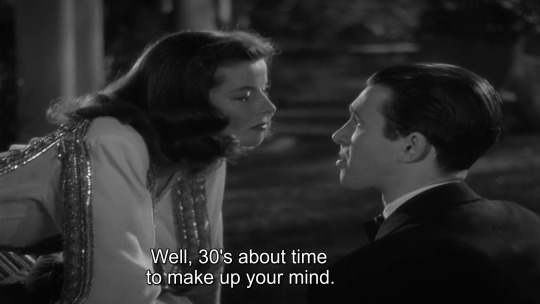
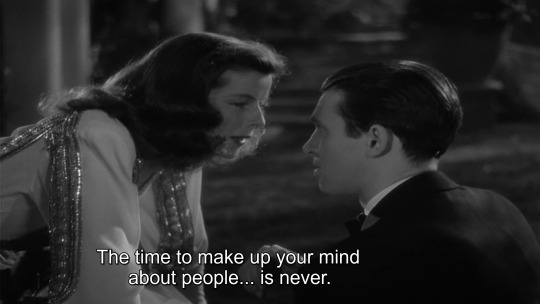
The Philadelphia story, 1940
#comedy#romance#the philadelphia story#george cukor#donald ogden stewart#philip barry#waldo salt#katharine hepburn#james stewart#grow
10 notes
·
View notes
Text
Top two vote-getters will move on to the next round. See pinned post for all groups!
#best best adapted screenplay tournament#best adapted screenplay#oscars#academy awards#the father#christoper hampton#florian zeller#the country girl#george seaton#clifford odets#the philadelphia story#donald ogden stewart#philip barry#gods and monsters#bill condon#christopher bram#the lion in winter#james goldman#poll#bracket tournament#polls#brackets
3 notes
·
View notes
Text
Memnock, glaring at Kevin and Shope: It is never correct of either "gender" to push older ladies in front of swiftly approaching motor vehicles or street cars by
#supernoobs#incorrect quotes#incorrect supernoobs#kevin reynolds#jennifer shope#supernoobs mem#supernoobs memnock#mem#memnock#source: “perfect behavior” by Donald Ogden Stewart#source: tumblr#They were joking about getting points for hitting pedestrians#and mem walked in as soon as they began debating the logistics of pushing people in the way and if its cheating#or if it has to come naturally#mem was not amused#but i sure am
7 notes
·
View notes
Text
Hemingway complains about other people's cowardice but he writes a novel excoriating his former closest friends and brags that he's written but refuses to tell anyone what it's about which 🤔 would we not say lying by omission is a form of cowardice?
#please feel free to ignore this#I'm reading Everybody Behaves Badly#Donald Ogden Stewart has an interesting quote where he says something like 'nowadays we would call it charisma'#which I find very interesting because it implies 'charisma' was not a word used in the 1920s#to describe this cult leader-type energy Hemingway exudes#whereas I personally can think of no other word to use that would explain why people still like him! Even before the book is published!#He talks mad shit about literally everyone in his orbit which begs the question like what is he saying about YOU 🤨
1 note
·
View note
Text
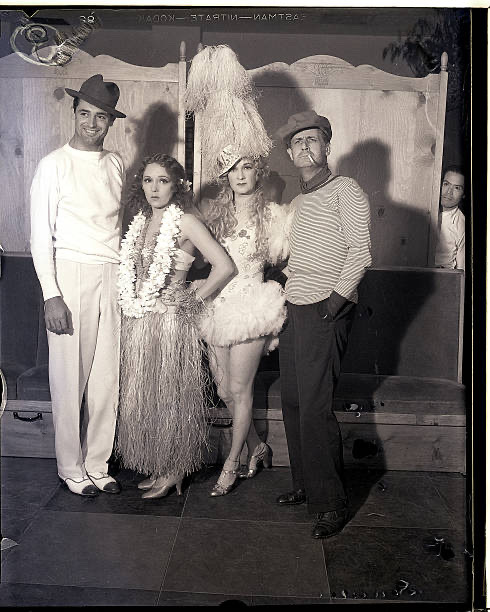
Cary Grant, Mary Pickford, Countess de Frasso and Tullio Carminati at a party given by novelist Donald Ogden Stewart at the Vendome Cafe in Hollywood in 1933. The guests came dressed as their favorite screen starS.
90 notes
·
View notes
Text
Here it is! My most frequently rewatched movie! Thank you for coming on this journey with me.
Script below the break
Hello and welcome back to The Rewatch Rewind! My name is Jane, and this is the podcast where I count down my top 40 most frequently rewatched movies in a 20-year period. Today, at last, we reach the end of that list as I discuss my number one: MGM’s 1940 comedy The Philadelphia Story, directed by George Cukor, written by Donald Ogden Stewart with uncredited contributions from Waldo Salt, based on the play by Philip Barry, and starring Cary Grant, Katharine Hepburn, and James Stewart.
Two years after the disastrous end of her first marriage to childhood friend C.K. Dexter Haven (Cary Grant), socialite Tracy Lord (Katharine Hepburn) is preparing for her second wedding, to George Kittredge (John Howard), general manager of her estranged father’s coal mining company. Eager to cover this story but knowing that Tracy loathes publicity, Spy magazine editor and publisher Sidney Kidd (Henry Daniell) enlists the help of Dexter to get reporter Macaulay “Mike” Connor (James Stewart) and photographer Elizabeth “Liz” Imbrie (Ruth Hussey) to the Lord house the day before the wedding. In those 24 hours before her second marriage begins, Tracy is prompted to rethink not only her choice of husband, but also her entire attitude toward people and life.
This must have been one of the first old movies I saw in 2002 because the only thing I remember about my initial experience of it was that I expected Tracy to accept Mike’s proposal, and if I’d been an experienced old movie watcher by then I would have known that obviously Katharine Hepburn was going to end up with Cary Grant, not James Stewart. I certainly did not immediately fully appreciate this movie, although I was intrigued enough to keep revisiting it until eventually it became my favorite. I watched it five times in each year from 2003 through 2005, four times in 2006, twice in 2007, 2008, and 2009, three times each in 2010 and 2011, five times in 2012, once in 2013, once in 2014, twice in 2015, once in 2017, twice in 2018, four times in 2019, once in 2020, twice in 2021, and once in 2022. Part of why I watch this so much is because it has three stars whose birthdays I celebrate almost every year, so I often watch it for Cary Grant’s birthday and then either Katharine Hepburn’s or James Stewart’s (their birthdays are only about a week apart so I don’t usually watch it for both). I think part of why I didn’t watch it in 2016 is because I watched it in late December of 2015 for the 75th anniversary of its release, so Grant’s birthday in January felt too soon to revisit it, and that May I decided to watch through all the Fred and Ginger movies starting with Astaire’s birthday, so I was less focused on Kate’s and Jimmy’s birthdays that year. And then later in 2016 I was too obsessed with Poe Party to watch much of anything else. But to make up for that, the reason I watched it so many times in 2019 is because Mary Kate Wiles used to host readings of plays and movie scripts with her actor friends for her Patreon, and I offered to transcribe the script of Philadelphia Story so she could do a reading of that one, and even though I knew the movie very well by then I decided to go through it a few more times to make sure I got all the details right, so eventually my love of Poe Party led to more rewatches of this. And the current Shipwrecked project, The Case of the Greater Gatsby, takes place in December of 1940 so there are lots of Philadelphia Story references in it and they make me very happy. Anyway, I’ve put quite a bit of effort into not watching this movie too many times too close together because I don’t ever want to overwatch it to the point of getting tired of it, like I did with a few other movies I’ve mentioned on this podcast, and many more that I burned out before they could make it into my top 40. While the stars’ birthdays have contributed to the view count, mostly this is my number one comfort movie that I know I can always turn to when I need something to watch, and I’m afraid of pushing it to the point where that no longer works. Although the fact that I sat through it 51 times in 20 years – the same number of views as number two plus number 40 on this list – and haven’t come close to getting tired of it yet indicates that I probably never will.
I don’t think I can really articulate what exactly it is about this movie that makes it my favorite to revisit, but I’m going to try. Certainly the fact that it features three of my favorite classic film stars helps, although a big part of why I love those stars so much is because of what they did in The Philadelphia Story. Every single member of the cast gives an absolutely fabulous performance. There isn’t a ton of action, but the dialogue is a perfect example of everything I love about the best Old Hollywood scripts: snappy and witty and clever on the surface, with real human emotion and intriguing philosophy underneath. The movie features many different kinds of brilliantly executed comedy, but the more serious moments still hit without feeling out of place. It deals with taboo subjects like divorce, infidelity, and alcoholism in ways that complied with production codes but still don’t feel too watered down. Basically, it has all the aspects I love about the other old movies on this list, only more so.
Several of my very favorite movie scenes of all time are in The Philadelphia Story. One is when Mike has had a lot to drink at a party and decides to visit Dexter in the middle of the night. The way drunk Jimmy Stewart and sober Cary Grant interact is hilarious and makes me desperately disappointed that the two of them never appeared in another movie together. At one point, Stewart makes a noise that’s kind of a mix of a hiccup, a cough, and a burp. Grant, thinking that Stewart has ruined the take, goes, “Excuse me,” sounding a little annoyed but trying to make a joke out of it, but then Stewart drunkenly responds with, “Huh?” indicating his intention to go on with the scene. Grant looks down, stifling a laugh, and then they continue with the dialogue, and I love that instead of reshooting it, or editing around it, they kept that in the movie. There may not be a blooper reel, but we still get to watch Jimmy Stewart almost break Cary Grant, and that’s good enough for me.
Another of my favorite scenes comes a bit earlier in the film, when Tracy and her younger sister, Dinah, played by Virginia Weidler, meet Mike and Liz for the first time. Tracy immediately saw through Dexter’s story that they were friends of her older brother’s and knows they’re reporters, but agreed to play along when Dexter informed her that Sidney Kidd intends to publish a story about Tracy’s father’s affair with a dancer unless he gets a story on her wedding. To protest the situation, Tracy and Dinah decide to put on a show for Mike and Liz, who don’t know that they know they’re reporters, and it is maybe my favorite comedic scene in any movie. First Dinah dramatically stumbles in wearing pointe shoes and some gaudy jewelry that was a wedding present she previously insulted. She then puts on an overly posh voice as she explains that she spoke French before she spoke English – “C’est vrai absolument!” – and boasts that she can play the piano “and sing at the same time!” She makes her way to the piano with the least graceful toe walk possible, and then bangs out a very silly rendition of “Lydia the Tattooed Lady,” a song mainly associated with Groucho Marx. While Mike and Liz are staring at her in bewilderment, Tracy peeks into the room and beams like she’s never been prouder of her sister. Once the song is finished, Tracy enters and praises Dinah in French, comparing her to Chopin, and then saying Dinah looks ill and she hopes it’s not smallpox, which freaks out Mike and Liz, but the audience knows it’s a private joke because earlier Tracy told Dinah that the only way she could postpone the wedding was to get smallpox. After Dinah leaves, it’s Tracy’s turn to confuse the reporters, and it is truly brilliant. The dialogue and the way it’s read, as Tracy turns the interview around and starts asking them invasive questions, is so good. Like when Tracy’s talking about how they don’t let any reporters in, “except for little Mr. Grace who does the social news. Can you imagine a grown-up man having to sink so low?” or when she’s welcoming them to Philadelphia and says, “It’s a quaint old place, don’t you think? Filled with relics, and how old are you, Mr. Connor?” It’s the seemingly accidental but actually very deliberate insults that get me. And then on top of that, there is some incredible yet subtle physical comedy going on throughout the conversation. Tracy accidentally-on-purpose pushes Mike and Liz into each other as she offers them seats, and there’s a whole very long bit between Tracy and Mike involving cigarettes, matches, and lighters that I didn’t even notice the first few times I watched it because I was too focused on what they were saying. It’s a thoroughly enjoyable scene all the way through, and every time I watch Tracy exit that room, leaving the reporters to ponder their bafflement, I have to applaud.
But the movie also excels at mixing some drama and seriousness in with the comedy. There’s a lot of focus on how Tracy demands perfection from herself and everyone around her, and as a result is missing out on the joys of human messiness. She makes a big deal about never drinking alcohol, although Dexter reveals that she did get drunk one time when they were married, and later remembered nothing about it. But after Dexter tells her that being married to her felt like being a high priest to a goddess, and George tells her that he worships her like a queen, and her father, who showed up uninvited, tells her she might just as well be made of bronze, Tracy gives in and starts drinking heavily at the party the night before her wedding, which was where Mike also got very drunk. Tracy and Mike meet up at Dexter’s house, then go back to her place, and dance and argue for a while until Mike kisses her and tells her that he sees her as a human being, which is a wonderful change of pace for her, so she suggests they go swimming together. Later, Dexter and George see Mike carrying Tracy back to the house, both of them in bathrobes, and George assumes the worst. The next morning, Tracy can’t remember what happened, but Dinah tells her that she saw Mike carry Tracy into her room – which is another excellent scene, Virginia Weidler was one of the best child actors of all time and people barely ever talk about her anymore, but she and Katharine Hepburn do a fabulous job of getting the point across that they both think Tracy slept with Mike the night before without breaking production codes. And then after that when Mike appears, he and Tracy have the most excruciatingly awkward conversation, and it’s so painful but so good. Dexter also shows up trying to comfort Tracy, and I love the way he doesn’t accuse her or condemn her or even ask her what happened, partly because he knows she doesn’t remember, partly because Mike told him nothing happened, but partly because you get the feeling that he wouldn’t think any less of her if she had drunkenly hooked up with Mike. And maybe that’s reading too much into this, but his reaction is certainly quite different from George’s, which I guess makes sense because technically she would have been cheating on George and not Dexter, but George doesn’t even let her explain before breaking up with her by note. He does finally show up in person as she’s reading the note aloud to Dexter, Mike, and Liz, and their confrontation is so well done – I particularly love Liz’s “Say something, stupid!” to Mike, who is just standing there listening to George accuse Tracy of having an affair with him. But after a while, Mike does eventually reveal that their so-called affair consisted of exactly two kisses and a rather late swim. Tracy and George don’t believe him at first, and then Tracy is offended, until he points out that she was very drunk and he didn’t want to take advantage of her. And like, I know that this movie was made in 1940, so the censors weren’t going to let Tracy actually have sex with another man the night before her wedding anyway, but I still can’t help loving the way they handled this. Tracy makes a bit of a fool of herself and learns that George is not the right man for her without going too far, and Mike demonstrates that it’s not that difficult to respect a woman’s autonomy and recognize when she is unable to consent.
I have a lot of mixed and complicated feelings about this story from an aroace perspective. On the one hand, it is very focused on romance and marriage. Also the whole thing about characters describing Tracy using phrases like “virgin goddess” and “perennial spinster, however many marriages” to illustrate her coldness and lack of human understanding is…not exactly an ace-affirming metaphor. On the other hand, I always appreciate stories about adults who have the chance to sleep together and choose not to, even when I know it’s at least partly because of production codes. And somehow, something about the way Dexter, Tracy, Mike, and Liz all interact give me hints of queer found family vibes, even though they end up paired off heterosexually. Maybe it’s the fact that it was directed by a gay man and features at least two probably queer actors that’s giving me that vibe, I don’t know. Another of my favorite scenes – I know, I have way too many – is when Dexter and Liz return to the Lord house after writing a blackmail note to Sidney Kidd. It’s a fairly short scene, but the way the two of them interact as platonic friends who understand each other but clearly don’t like each other romantically is not something I’m used to seeing in a scene featuring a man and a woman alone, and it makes me happy. Mike also has some great moments with Dexter, as does Tracy with Liz. I like to think that the four of them maintain their friendship after the events of the movie, rather than amatonormatively going off and doing their own thing with their spouse and forgetting about their friends. This movie does portray sex and romance as part of the human experience, but I don’t feel like it portrays them as the only important part. The message is all about pursuing the life that’s right for you, and not looking down on people who have different priorities, and when you look at it from that perspective, it actually is kind of ace-affirming, albeit probably unintentionally. But as I’ve indicated multiple times in previous episodes, asexual representation is so rare, and aromantic representation is even rarer, that if you can find an approximation of affirmation by tilting a story and squinting at it, even that feels exciting. That’s how low the bar is.
With that being said, as a teenager I definitely did relate to Tracy Lord, at least in terms of the way I was perceived. I think a lot of my peers thought that I thought I was better than them, when it was mostly that I just didn’t understand them. I don’t remember anyone calling me a goddess or a queen or a statue, but other middle and high schoolers definitely teased me for being “perfect”, which told me that they didn’t really see me as a person, so I felt Tracy’s pain and confusion when she got called out like that. I do think that like Tracy, I had a lot to learn about letting myself make mistakes and not judging other people too harshly for theirs, but I also still strongly feel that some of the criticism leveled at Tracy – and at me – was unwarranted. I can’t tell if the movie wants us to agree with Tracy’s father when he blames his philandering on not having the right kind of daughter, but I think that’s entirely unreasonable of him, and Tracy absolutely does not deserve that. And I’m not sure it’s fair of Dexter to blame her for contributing to his alcoholism, but at least Dexter takes some responsibility for his actions, unlike Seth Lord. I think my peers didn’t understand me any more than I understood them, but I probably could have cut them more slack and tried to get to know them better before writing most of them off as too different for me to possibly get to know. The circumstances in this movie are very different from being a high school misfit, but as a high schooler who often had trouble relating to movies that were actually about high school misfits, somehow this movie spoke to me. It was an escape from high school that also helped get me through high school. The story helped me become a less judgmental and more forgiving person toward others while also helping me feel better about being who I was unapologetically. I also got similar messages from other sources, so I don’t want to give this movie too much credit, but at the same time, I don’t think any single movie affected my teenage years more than this one, so I would certainly be a different person if I had never seen it.
The story of how this movie came about and what it led to is also very important to me. After appearing in several box office flops in the late 1930s – several of which made it onto this list – Katharine Hepburn left Hollywood for Broadway to star in and financially back the stage version of Philadelphia Story, which Philip Barry had written specifically for her. Howard Hughes purchased the film rights as a gift for Hepburn, with whom he had been romantically involved, although it seems like the romantic part of their relationship was over before that, so this is like My Man Godfrey in that it turned out the way it did partly because of exes who were still friends. Katharine Hepburn then sold the rights to Louis B. Mayer for only $250,000 on the condition that she would have input and veto power over producer, director, screenwriter, and cast. She got the director and writer she wanted, but her first choice for the two male leads – Clark Gable and Spencer Tracy – were unavailable. Gable reportedly hated George Cukor and was rumored to be at least partly responsible for the director being kicked off of Gone with the Wind, so it’s probably just as well that he wasn’t involved. Future lovers Hepburn and Tracy hadn’t even met yet at this point, so it would have been interesting if this was their first movie. But ultimately, Cary Grant came on board, under the condition that he would receive top billing, which feels a bit strange to see because Hepburn is clearly playing the main lead, but Grant also donated his entire salary to the British War Relief Society, so we can’t accuse him of too much selfishness. And James Stewart’s performance as Mike would earn him one of the film’s two Oscars, although he apparently thought that Henry Fonda should have won for The Grapes of Wrath, and that he had only received it as belated recognition for his performance in Mr. Smith Goes to Washington the previous year. Donald Ogden Stewart also won for Best Screenplay. The film was also nominated for Best Picture and Cukor was nominated for Best Director, and the performances of Katharine Hepburn and Ruth Hussey were nominated as well. The fact that Hepburn didn’t win – and lost to her rival Ginger Rogers, no less – indicates that Hollywood was still a little reluctant to welcome her back. But this movie crucially changed the public’s perception of Katharine Hepburn, transforming her from box office poison to a box office draw. They were calling her a has-been in 1938, but with The Philadelphia Story she showed them that she still had more to contribute, and her career took off in the 1940s, and lasted into the 1990s.
Even now, generations later, twenty years after Hepburn’s death, it’s easy to tell just by watching this movie why it was such a turning point for her. She completely embodies the spoiled socialite, but she makes Tracy sympathetic enough that when she is taken down a few pegs, as she needed to be, the audience feels sorry for her rather than gloating. Tracy is radiant enough that we understand why George worships her, yet she is down to earth enough that we understand her yearning to be seen not as an object of worship, but as a human being. Hepburn nails both the comedic scenes and the more serious dramatic scenes, with no hint of the desperately-trying-too-hard actress who comes across too often in some of her earlier films. While I obviously still love many of those films, watching this one feels like we’re seeing a Katharine Hepburn who has finally come into her own. There certainly was an element of trying to get the public to like her, but there’s no desperation about it. She gets this character, and knows how to make the audience get her too. I don’t think I could have found Tracy so relatable if she hadn’t been played like that. And listen, I’m thrilled that Ginger Rogers won an Oscar, especially because Hepburn would end up with four and didn’t really need this win, but if I had to pick one single all-time favorite film performance, I can’t think of any that would beat Katharine Hepburn’s Tracy Lord. Although I also have to say that I think Cary Grant’s performance as Dexter is incredibly underappreciated. I’ve said before that sometimes I have trouble taking him seriously in dramatic roles, but this was the ideal blend of seriousness and silliness for him, and he nails every emotional beat. He does an excellent job of showing the audience that he has grown and learned from the mistakes of his first marriage and is ready to move forward with healing his relationship with Tracy, which makes this a much better remarriage story than His Girl Friday, for example. There were a lot of movies made around this time about a divorced couple reconciling, mostly because that was the only way the Production Code allowed the scandalous topic of divorce to be addressed on film, but Philadelphia Story feels different from most of those. It’s more like Pride and Prejudice, if Pride and Prejudice started right after Elizabeth turned down Darcy’s first proposal. Both are about a couple who needed to grow and reflect before they could be happy together. I think those are my favorite kind of romances because they have less to do with attraction, which I don’t really understand, and more to do with trying to become the best version of oneself, which everyone can do regardless of how they feel about romance. Anyway, I’m a little sad that this was the last time Cary Grant and Katharine Hepburn worked together, but I’m so glad they got to make this masterpiece before their careers diverged.
In 1956, The Philadelphia Story was remade as a musical film called High Society, which I watched 12 times. I enjoy that version too, although obviously not nearly as much as this version. It’s a fun romp, and the Cole Porter songs are great, but it doesn’t quite pack the same emotional punch as The Philadelphia Story. Strangely, considering I don’t think anything can touch Hepburn’s original portrayal, my favorite part of that movie is Grace Kelly’s performance as Tracy. She put her own spin on the character and was clearly having fun – probably at least partly because she’d already decided to retire from acting and marry a prince, and was wearing her actual engagement ring in the film. My biggest objection to High Society – and yes, I know I’ve complained about this too many times on this podcast but bear with me one more time – is the age gap between Dexter and Tracy. They’re supposed to have grown up together, but Bing Crosby was 26 years older than Grace Kelly, and their dynamic is just all wrong. The story doesn’t work if Dexter is old enough to be Tracy’s father! Whereas in Philadelphia Story, we’ve got Cary Grant who was born in 1904, Katharine Hepburn who was born in 1907, and James Stewart who was born in 1908. They were all basically the same age! It can be done! John Howard was born in 1913, so he was a bit younger, but I think that works for the way George looks up to and admires Tracy, and still that’s a relatively small gap. Anyway, we can add “getting actors of appropriate ages” to the long list of things The Philadelphia Story did right.
So there we have it. I’ve talked about all of my top 40 most frequently rewatched movies of my first 20 years of keeping track. Thank you so much for listening to all my rambling! I hope you’ve found this entertaining and informative – I know I have. I’m planning to do one more epilogue episode in a few weeks summarizing what I’ve learned from this project, so stay tuned for that if you’re interested. I also have lots of other ideas for movie-related podcasts that may or may not come to fruition, we’ll see. Since I don’t know what the next movie I’ll podcast about will be, I’ll leave you with one last quote from The Philadelphia Story: “We all go haywire at times, and if we don’t, maybe we ought to.”
#the philadelphia story#george cukor#katharine hepburn#cary grant#james stewart#i love this movie so much#this project has been a lot of fun#i'll be back with a conclusions episode soon-ish#but i'm going to take a break first
12 notes
·
View notes
Text
Celebrity Skin
AHHHHHHHH!
Spoilers for Episode 10 of The Case of the Greater Gatsby under the cut!
GUYS THIS WAS THE BEST EPISODE! I don’t think I’ve laughed out loud so consistently while listening to a podcast in years. Obviously, the Persauds should be proud of everything they’ve written, but they should be extra proud of this complete and utter gem of a farce.
But let’s start with the bad news. As much as No Cop, No Cop absolutely exceeded my expectations, I don’t think Ford felt the same. It might be awhile before we get him in on another caper. Also, ironically after what I wrote last week, Cliff has already blithely broken up with his contractor. Must be nice to have so much money that you can build all those bathrooms for nothing and then not even be upset about it. But while much poorer than Cliff, I too am resilient and apparently inconstant, because I’ve already jumped right on board the good ship Cliff/Rex (Riff? Callowhistle? Punchaway?) and am ready to sail!
Meanwhile, we can unsurprisingly cross Zelda off the murder suspect list and add Willie, Cliff, and Leery to the guest list at Mel’s party the night Fitzy died. And I’m pretty sure Ford and I are on the same page as to the location of the missing tapes (they HAVE to be behind Zelda’s painting at Sheila’s place, right?). Dash setting fire to Bixby's does feed into the plot thread of the bar's potential financial troubles (if those are even real), though whether the pyrotechnics will make the problems worse or the insurance will make them better remains to be seen. It would be kinda' hilarious if the answer to Bixby's money woes ends up being Dash-with-a-fan.
The part of me that is forever living in the opening performance of Eugene and Ramona Trousers' delightfully inane but extremely plot-relevant The History of Sleepy Hollow really wanted to scan this episode's improvised travesty for potential clues, but unless Fitzy's murderer got into his house by disguising themself as a chaise lounge (tragically unlikely), I really don't think there's anything there.
But it wouldn't be a Brooke-rambles-about-GG post without at least one bit of wild theorizing so we go: Eugene Punchwhistle is the Hinge Highway Man. I'm not saying I believe this, but I am saying that we have two completely tertiary mysteries, and it would be kinda' funny if they ended up simply answering each other. And I don't know who else Eugene could possibly be.
So yeah! What a fantastic episode! Grip Holdstuff might be my new favorite gag in all of Shipwrecked history! Clark Baxtresser's voice coming from a character that was just described as short might be my new favorite unintentional gag in all of Shipwrecked history! AND we got to hear Clark sing Cole Porter (😍😍😍😍😍😍😍)!! What a high-light! Good news, indeed!
Excited to hopefully get those tapes next episode. And when are we gonna check in on Donald Ogden Stewart?
#fig and ford#shipwrecked comedy#the case of the greater gatsby#clark baxstresser#ford phillips#fig wineshine#cliff calloway#rex punchwhistle#WHAT AN EPISODE
10 notes
·
View notes
Text

Robert Morley and Norma Shearer in Marie Antoinette (W.S. Van Dyke, 1938)
Cast: Norma Shearer, Tyrone Power, John Barrymore, Robert Morley, Anita Louise, Joseph Schildkraut, Gladys George, Henry Stephenson. Screenplay: Claudine West, Donald Ogden Stewart, Ernest Vajda. Cinematography: William H. Daniels. Art direction: Cedric Gibbons, Henry Grace. Film editing: Robert Kern. Costume design: Adrian, Gile Steele. Music: Herbert Stothart.
Hollywood historical hokum, W.S. Van Dyke's Marie Antoinette was a vehicle for Norma Shearer that had been planned for her by her husband, Irving G. Thalberg, who died in 1936. MGM stuck with it because as Thalberg's heir, Shearer had control of a large chunk of stock. It also gave her a part that ran the gamut from the fresh and bubbly teenage Austrian archduchess thrilled at the arranged marriage to the future Louis XVI, to the drab, worn figure riding in a tumbril to the guillotine. Considering that it takes place in one of the most interesting periods in history, it could have been a true epic if screenwriters Claudine West, Donald Ogden Stewart, and Ernest Vajda (with uncredited help from several other hands, including F. Scott Fitzgerald) hadn't been pressured to turn it into a love story between Marie and the Swedish Count Axel Fersen. But the portrayal of their affair was stifled by the Production Code's squeamishness about sex, and the long period in which Marie and Louis fail to consummate their marriage lurks unexplained in the background. MGM threw lots of money at the film: Shearer sashays around in Adrian gowns with panniers out to here, with wigs up to there, and on sets designed and decorated by Cedric Gibbons and Henry Grace that make the real Versailles look puny. The problem is that nothing like a genuine human emotion appears on the screen, and the perceived necessity of glamorizing the aristocrats turns the French Revolution on its head. The cast of thousands includes John Barrymore as Louis XV, Gladys George as Madame du Barry, and Joseph Schildkraut (made up with what looks like Jean Harlow's eyebrows and Joan Crawford's lipstick) as the foppish Duke of Orléans. The best performance in the movie comes from Morley, who took the role after the first choice, Charles Laughton, proved unavailable; Morley earned a supporting actor Oscar nomination for his film debut. With the exception of The Women (George Cukor, 1939), in which she is upstaged by her old rival Joan Crawford, this is Shearer's last film of consequence. When she turned 40 in 1942, she retired from the movies and lived in increasing seclusion until her death, 41 years later. It says something about Shearer's status in Hollywood that Greta Garbo, who retired at about the same time, and who also sought to be left alone, was the more legendary figure and was more ardently pursued by gossips and paparazzi.
9 notes
·
View notes
Photo
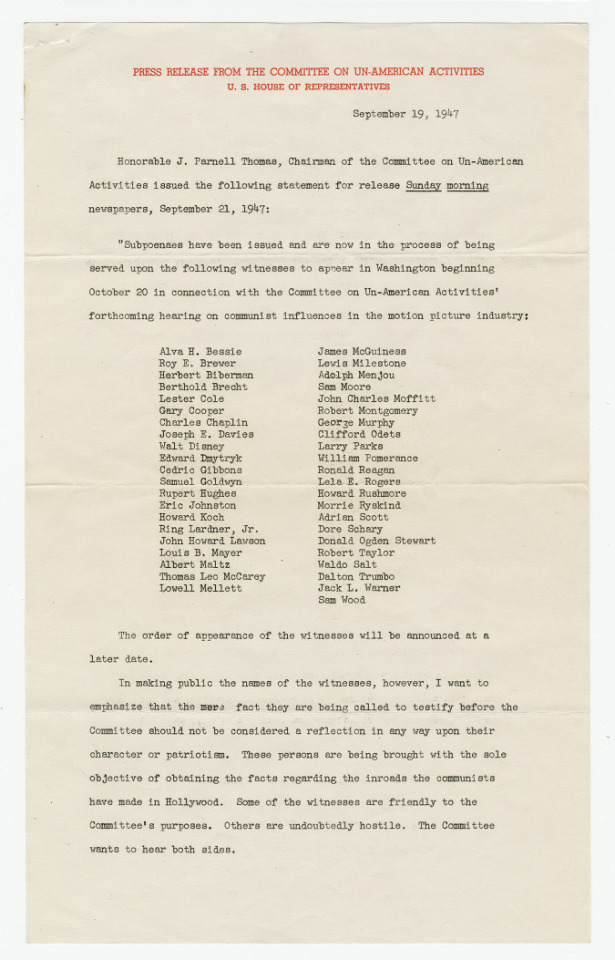

On 9/19/1947, the House Un-American Activities Committee subpoenaed witnesses on the “inroads the communists have made in Hollywood.”
Among the witnesses were Charlie Chaplin, Ronald Reagan, Walt Disney, and others.
File Unit: Exhibits, Evidence and Other Records of the Investigative Section of the Internal Security Committee During the 79th through 94th Congresses Related to the Hollywood Black List, 1945 - 1976
Series: Committee Papers, 1945 - 1975
Record Group 233: Records of the U.S. House of Representatives, 1789 - 2015
Transcription:
PRESS RELEASE FROM THE COMMITTEE ON UN-AMERICAN ACTIVITIES
U.S. HOUSE OF REPRESENTATIVES
September 19, 1947
Honorable J. Parnell Thomas, Chairman of the Committee on Un-American Activities issued the following statement for release Sunday morning ["Sunday morning" underlined] newspapers, September 21, 1947:
"Subpoenaes have been issued and are now in the process of being served upon the following witnesses to appear in Washington beginning October 20 in connection with the Committee on Un-American Activities' forthcoming hearing on communist influences in the motion picture industry:
Alva H. Bessie
Roy E. Brewer
Herbert Biberman
Berthold Brecht
Lester Cole
Gary Cooper
Charles Chaplin
Joseph E. Davies
Walt Disney
Edward Dmytryk
Cedric Gibbons
Samuel Goldwyn
Rupert Hughes
Eric Johnston
Howard Koch
Ring Lardner, Jr.
John Howard Lawson
Louis B. Mayer
Albert Maltz
Thomas Leo McCarey
Lowell Mellett
James McGuiness
Lewis Milestone
Adolph Menjou
Sam Moore
John Charles Moffitt
Robert Montgomery
George Murphy
Clifford Odets
Larry Parks
William Pomerance
Ronald Reagan
Lela E. Rogers
Howard Rushmore
Morrie Ryskind
Adrian Scott
Dore Schary
Donald Ogden Stewart
Robert Taylor
Waldo Salt
Dalton Trumbo
Jack L. Warner
Sam Wood
The order of appearance of the witnesses will be announced at a later date.
In making public the names of the witnesses, however, I want to emphasize that the mere fact they are being called to testify before the Committee should not be considered a reflection in any way upon their character or patriotism. These persons are being brought with the sole objective of obtaining the facts regarding the inroads the communists have made in Hollywood. Some of the witnesses are friendly to the Committee's purposes. Others are undoubtedly hostile. The Committee wants to hear both sides.
[page 2]
PRESS RELEASE FROM THE COMMITTEE ON UN-AMERICAN ACTIVITIES
U.S. HOUSE OF REPRESENTATIVES
- 2 -
The Committee had originally hoped to begin this hearing on September 29. However, a number of unforeseen circumstances have arisen regarding the membership of the Committee which necessitates a delay until October 20, in order that all members may be present for this important hearing. Mr. Mundt and Mr. Nixon are now in Europe as members of Congressional committees studying conditions there. Mr. Veil is convalescing from a recent operation, and Mr. Peterson has informed me that he cannot possibly attend the hearings this month. I feel quite certain, however, that all the members will be available by October 20.
Hearings will begin as scheduled September 24 on the Hanns Eisler phase of this hearing. This cannot be delayed until the October date for the reason that all of the witnesses have been subpoenaed and are in Washington at this time, some having been brought from foreign countries. The announced witnesses in the Hanns Eisler care are as follows:
Sumner Welles
P.C. Hutton, Second Secretary and Consul, Guatemala City, Guatemala
George S. Messermith, former Ambassador to Argentina
Joseph Savoretti, Asst. Commissioner for Adjudication U.S. Immigration and Naturalization Service.
Clarence R. Porter, Chief Inspector U.S. Immigration and Naturalization Service.
Hearings will begin in the Caucus Room of the Old House Office Building, at 10:30 A.M., September 24.
I should also like to announce at this time that I intend to make a nation-wide radio address early in October relative to the Hollywood hearing."
#archivesgov#September 19#1947#1940s#postwar#HUAC#House Un-American Activities Committee#communism#red scare#Hollywood
37 notes
·
View notes
Text
February 1936: The Town's Newest Combination

February 2, 1936: The Hostess Goes Home
(The Los Angeles Times)
Mystery still surrounds the early departure of Carole Lombard, official hostess of the evening, from the famous White Mayfair party. Did she leave on account of the “altercation” between Clark Gable and Lyle Talbot, which was reported to have occurred when she went out in the lobby of the Victor Hugo with Gable, or just because (the official reason) she was wearied by all the work connected with the ball?
Anyway, Carole declared it a day (or a night) at about 12:30, whereas some of the guests lingered on until even 4 o’clock. Possibly the absence of Robert Riskin was the real reason. He was ill. Cesar Romero squired the hostess, but only during the time she was at the party.
February 15, 1936
Valentine’s Day in the movie colony brought out practically everything but Valentines. The few orthodox valentines, with lace-paper and the bleeding heart, came from Shirley Temple. She made them. Clark Gable’s souvenir – he found out later it was from Carole Lombard – reached him on the stroke of midnight after he had driven his automobile into a hotel garage. “Sorry, Mr. Gable, but your stall’s taken,” the attendant told him.
Puzzled, the actor followed the man across the room and found the usual spot for his car already occupied by an aged machine. It was painted white with large, arrow-pierced hearts all over it.
Around the tonneau was a tremendous red ribbon tied in a large, flowering bow on the radiator cap.
February 18, 1936
Chatter in Hollywood: Carole Lombard’s divine sense of humor never deserts her. Reams were written that she had left the Mayfair party with Clark Gable before the dance had even started. So Carole thought she might as well make the story a good one. She bought an old dilapidated, fenderless automobile, had it painted white with huge hearts and monogrammed with Clark’s initials, and delivered to the fashionable hotel where he lives bright and early Valentine’s morning. Yes, and her card was on the steering wheel!
February 19, 1936
Carole Lombard and Clark Gable, the town’s newest combination…
February 21, 1936
Speaking of Valentines, did you hear about the one Carole Lombard sent Clark Gable. She had an old Ford painted white and decorated with huge red hearts and ribbon, and had it delivered to Mr. Gable’s hotel with her compliments. All this because of the false reports that have been going around town regarding the fact that she was romantically interested in Clark. Carole says she thought she would give gossips something real to talk about for a change.
February 24, 1936
CLARK GABLE, from the set of “San Francisco,” telephoned Carole Lombard on the set of “A Princess Comes Across” …
February 25, 1936
The boulevard is burning with the story of Clark Gable’s valentine. Returning from a party on the night of the 13th, the star sought to drive into his usual stall in the garage of a Beverly Hills hotel. “I’m afraid it is already occupied sir,” said the watchman.
Thereupon, Gable got out and, to his amazement, discovered an ancient and dilapidated Ford painted white with decorations of large red hearts. Around the body was tied a huge red ribbon. Gable grabbed the card. It read: “To My Valentine, from – Carole Lombard.”
February 25, 1936 – The San Francisco Examiner
After a week of unprecedented gaiety you might think the Schenck party would suffer, but with a good orchestra, grand food and conversation, most of the guests stayed on and on; Carole Lombard and Clark Gable left early because they are working and had to be on the set early.
February 26, 1936 – The Evening News
For days to come, Hollywood will be rehashing the “convalescent” party that Donald Ogden Stewart gave for his wife, Beatrice. He borrowed Jock Whitney’s house, summoned 150 of the movie elite to come at high noon, but dressed in full evening regalia – white ties and tails for the men, evening gowns of full court costumes for the women.
Mrs. Stewart, who has been getting home at 6 p.m. on account of doctor’s orders, thought it was to be a tennis party and arrived in slacks but later changed to evening clothes while riding around the yard in an ambulance with Hollywood’s famous ones doing a snake dance behind the vehicle.
But as Al Jolson would say, you haven’t heard nothing yet. Later on, when Jock Whitney and Gilbert Roland tried to have a serious game of tennis, Clark Gable (armed with a broom), Carole Lombard and a half dozen others batted balls at random at them and all over the court.
2 notes
·
View notes
Text
§ 3.227. Tú y yo (Leo Mc Carey, 1939)

La versión original de una película que me encantó cuando la vi por primera vez. Todos dicen que esta versión es mejor. No tiene esa alegría de las películas de color ni a Cary Grant y Deborah Kerr, pero tiene a Charles Boyer y, sobre todo a Irene Dunne, una actriz verdaderamente encantadora. Sutil, delicada, con matices, guapa pero no arrebatadora, femenina, sonriente y sumamente atractiva. En los planos medios, vestidas de blanco y con una pamela en la mano está arrebatadoramente guapa. Charles Boyer está como siempre, varonil, educado, algo duro en la mirada, con un pasado por contar pero muy buen actor. Me ha gustado mucho el papel de Maria Ouspenskaya, actiz de origen ruso que volvió a triunfar en su senectud en el cine de Hollywood.
El guión es de Delmer Davis, así se entienden algunas cosas, y de Donald Ogden Stewart, para mi desconocido.
Es deliciosa, consigue rápidamente el punto dramático y es de esas cintas que no quieres que acaben, que estás convencido que verás otras veces, y que siempre te gustará.
Verdaderamente Irene Dunne es una mujer preciosa.
La cinta, como no, es de 1939, el año mágico el cine.
Puede ser algo ´ñoña´ en su argumento, simple y poco desarrollada, pero funciona a la perfección. Es cine y para ser buen espectador debes olvidarte de pensar en la continuidad del guión o en su verosimilitud.
0 notes
Text
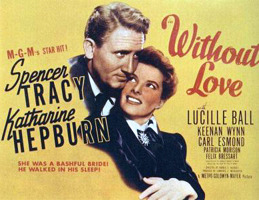

* OUTSTANDING CLASSIC CINEMA #75: "WITHOUT LOVE" ©1945 Harold S. Bucquet / Philip Barry / Donald Ogden Stewart (Romance / Comedy Genre - Starring: Spencer Tracey and Katharine Hepburn), Produced by Lawrence Weingarten / Metro-Goldwyn-Mayer (MGM) https://www.kellygrant.ca/OutstandingClassicCinema.ubr
1 note
·
View note
Text
See pinned post for the full bracket!
#best best adapted screenplay tournament#academy awards#oscars#best adapted screenplay#the philadelphia story#donald ogden stewart#philip barry#all about eve#joseph l. mankiewicz#mary orr#poll#bracket tournament#polls#brackets
1 note
·
View note
Text
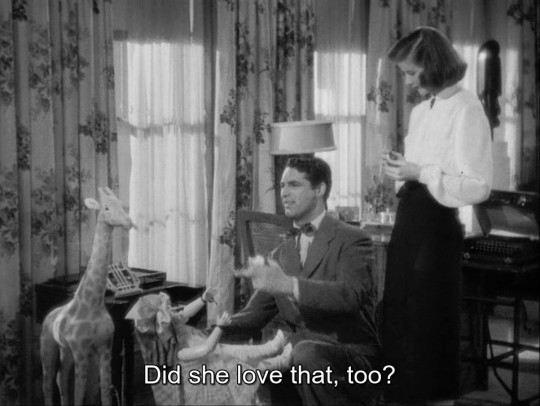


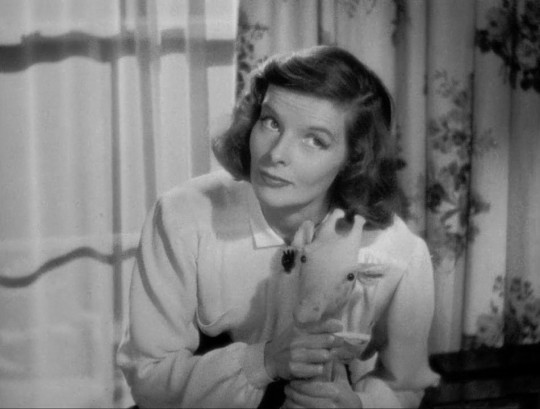

Holiday (1938)
Directed by George Cukor
74 notes
·
View notes
Photo
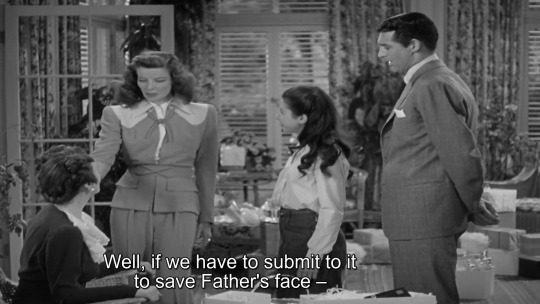
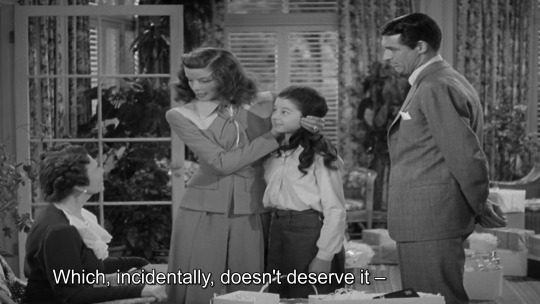

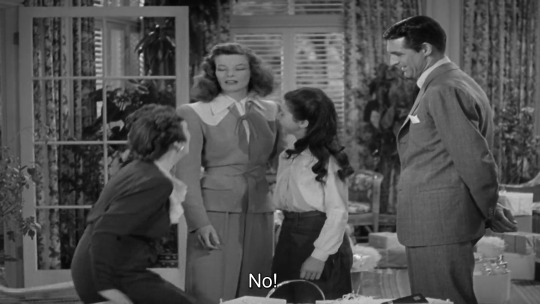
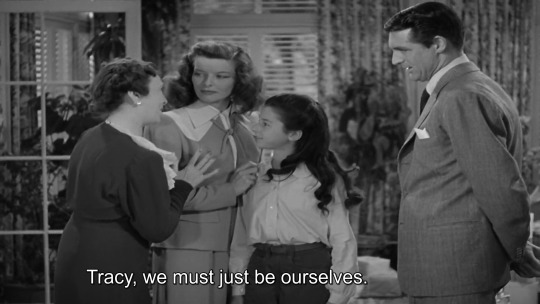
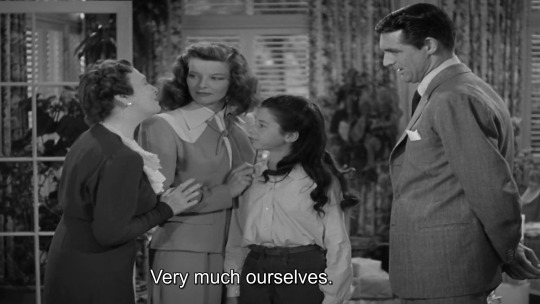
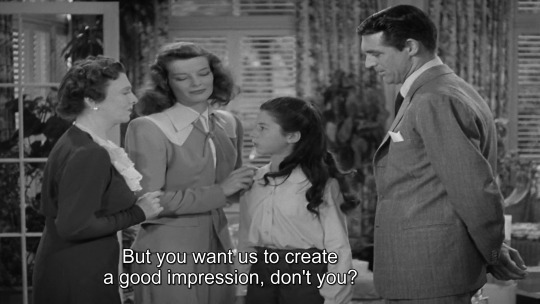
The Philadelphia story, 1940
#comedy#romance#the philadelphia story#george cukor#philip barry#donald ogden stewart#katharine hepburn#mary nash#virginia weidler#presentation
6 notes
·
View notes
Photo
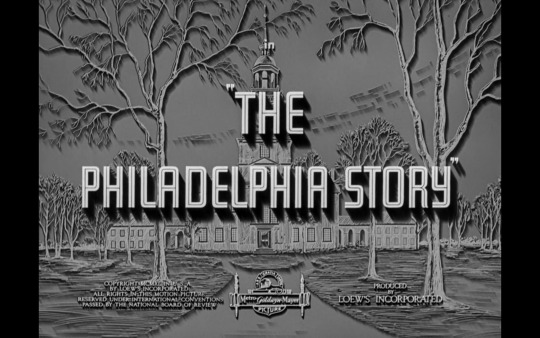
The Philadelphia Story.
Released: January 17, 1941.
Director: George Cukor.
Writer: Donald Ogden Stewart (screen play), Phillip Barry (based on the play by).
Cinematography: Joseph Ruttenberg.
Film Editing: Frank Sullivan.
Music: Franz Waxman.
Staring: Cary Grant, Katherine Hepburn, James Stewart, Ruth Hussey, John Howard.
Producer: Joseph L. Mankiewicz
#The Philadelphia Story#1940#Film#Director#George Cukor#Screenplay#Donald Ogden Stewart#Play#Phillip Barry#Cinematography#Joseph Ruttenberg#Film Editing#Frank Sullivan#Soundtrack#Music#Stars#Cary Grant#Katherine Hepburn#James Stewart#Ruth Hussey#John Howard#Producer#Joseph L. Mankiewicz#1940s cinema#Like#Follow#Reblog#Repost#Gowns by Adrian#Adrian
12 notes
·
View notes